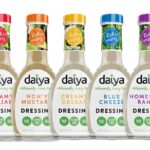Indulge in the artistry of French pastry without compromise! This guide unveils the secrets to crafting delectable, allergen-free desserts that capture the elegance and exquisite flavors of classic French creations. Learn to navigate the nuances of allergen-free baking, mastering techniques to substitute common allergens like dairy, gluten, nuts, and soy, while maintaining the texture and visual appeal that define French patisserie. From airy meringues to creamy brûlées, we’ll transform beloved recipes into masterpieces that are both delicious and safe for those with dietary restrictions.
We’ll explore essential techniques for safe handling and ingredient selection, providing detailed substitutions and adjustments for achieving optimal results. Discover innovative recipes that go beyond simple adaptations, showcasing the boundless creativity possible within allergen-free baking. Prepare to elevate your baking skills and delight your taste buds with these stunning, allergy-friendly French-inspired treats.
Allergen-Free French Dessert Substitutions

Creating delightful French desserts without common allergens requires careful ingredient selection and adjustments to traditional recipes. This section details suitable substitutions, addressing texture and flavor challenges, and offering guidance on baking adjustments for optimal results. The goal is to maintain the authentic spirit of French pastries while ensuring they are safe and enjoyable for those with dietary restrictions.
Flour Alternatives and Their Properties
Selecting the right flour substitute is crucial for achieving the desired texture in allergen-free French desserts. Different flours offer unique properties, influencing the final product’s structure, moisture content, and overall taste. The choice depends heavily on the specific dessert being prepared. For instance, a delicate macaron requires a finer, lighter flour than a hearty gâteau.
| Flour Type | Properties | Suitable for | Considerations |
|---|---|---|---|
| Almond Flour | Naturally sweet, dense, readily absorbs moisture. | Madeleines, financiers, certain cakes. | Can result in drier textures; requires careful moisture management. |
| Coconut Flour | Very absorbent, adds a distinct coconut flavor. | Cakes (when combined with other flours), cookies. | Requires significantly more liquid than other flours; can be dense. |
| Rice Flour | Mild flavor, creates a lighter texture than almond or coconut flour. | Cakes, crêpes (often blended with other flours). | Can be gummy if not balanced with other ingredients; often requires a binding agent. |
| Oat Flour (ensure gluten-free) | Slightly nutty flavor, adds moisture and binding. | Cookies, muffins, some cakes. | Can have a slightly grainy texture; best used in combination with other flours. |
Egg Substitutions and Their Impact
Eggs play a vital role in French baking, contributing to structure, leavening, and richness. Several alternatives can mimic these functions, although perfect replication is challenging. The choice of substitute will affect the final product’s texture and moisture content.
- Flax eggs: One tablespoon of ground flaxseed meal mixed with three tablespoons of water creates a binding agent similar to an egg white. It adds a slightly nutty flavor.
- Chia eggs: Similar to flax eggs, chia seeds offer binding properties and a slightly milder flavor. The ratio is the same as flax eggs.
- Applesauce: Applesauce provides moisture and can partially replace eggs in some recipes, impacting the final texture and flavor subtly.
- Mashed banana: Adds moisture and sweetness; suitable for certain cakes and muffins, but the banana flavor will be noticeable.
Dairy-Free Alternatives in French Desserts
Dairy is a cornerstone of many French desserts, providing richness, creaminess, and structure. However, several dairy-free alternatives can produce delicious results. The key is to choose alternatives that mimic the functional properties of the dairy ingredient being replaced.
- Coconut cream: Offers richness and creaminess, suitable for mousses, custards, and fillings. It imparts a coconut flavor.
- Dairy-free milk (almond, soy, oat): Can replace milk in recipes, but the flavor may be subtly altered. Consider using unsweetened varieties to avoid excessive sweetness.
- Dairy-free butter (coconut, plant-based): Provides richness and structure similar to butter. Choose a high-quality option to avoid a waxy texture.
Adjusting Baking Times and Temperatures
Baking times and temperatures may need adjustments when using allergen-free substitutes. Different ingredients have varying moisture content and density, affecting how quickly they bake. Observing the baking process closely is crucial to avoid over- or underbaking. For example, recipes using coconut flour often require lower temperatures and shorter baking times due to its high absorbency. Conversely, denser flours like almond flour might need a slightly longer baking time to ensure a fully cooked interior. Using a toothpick or cake tester is essential to confirm doneness.
Creating exquisite allergen-free French desserts is not just possible; it’s an exciting culinary adventure. By mastering the techniques and substitutions Artikeld in this guide, you’ll unlock a world of delicious possibilities, crafting desserts that are as visually stunning as they are safe and flavorful. From mastering meringue alternatives to confidently substituting flours and creating unique flavor combinations, this journey empowers you to bake with confidence and share the joy of sophisticated French pastry with everyone.
Expert Answers
Can I use pre-made allergen-free mixes for these recipes?
While pre-made mixes can be convenient, using them might limit your control over the final product’s texture and taste. It’s often better to make your own mixes from certified allergen-free ingredients for optimal results and to ensure complete allergen control.
How long can I store these allergen-free desserts?
Storage times vary depending on the specific dessert and ingredients used. Generally, refrigerate most allergen-free French desserts for optimal freshness, usually lasting 3-5 days. Always refer to specific recipe instructions for storage recommendations.
What are the best tools for allergen-free baking?
Investing in separate baking tools and equipment dedicated solely to allergen-free baking helps prevent cross-contamination. This includes measuring cups, spoons, mixing bowls, and baking sheets. Thorough cleaning between uses is also crucial.
Are all allergen-free ingredients created equal?
No, the quality and source of allergen-free ingredients significantly impact the final product. Opt for certified allergen-free ingredients from reputable suppliers to ensure purity and consistency. Check labels carefully for any potential cross-contamination warnings.


